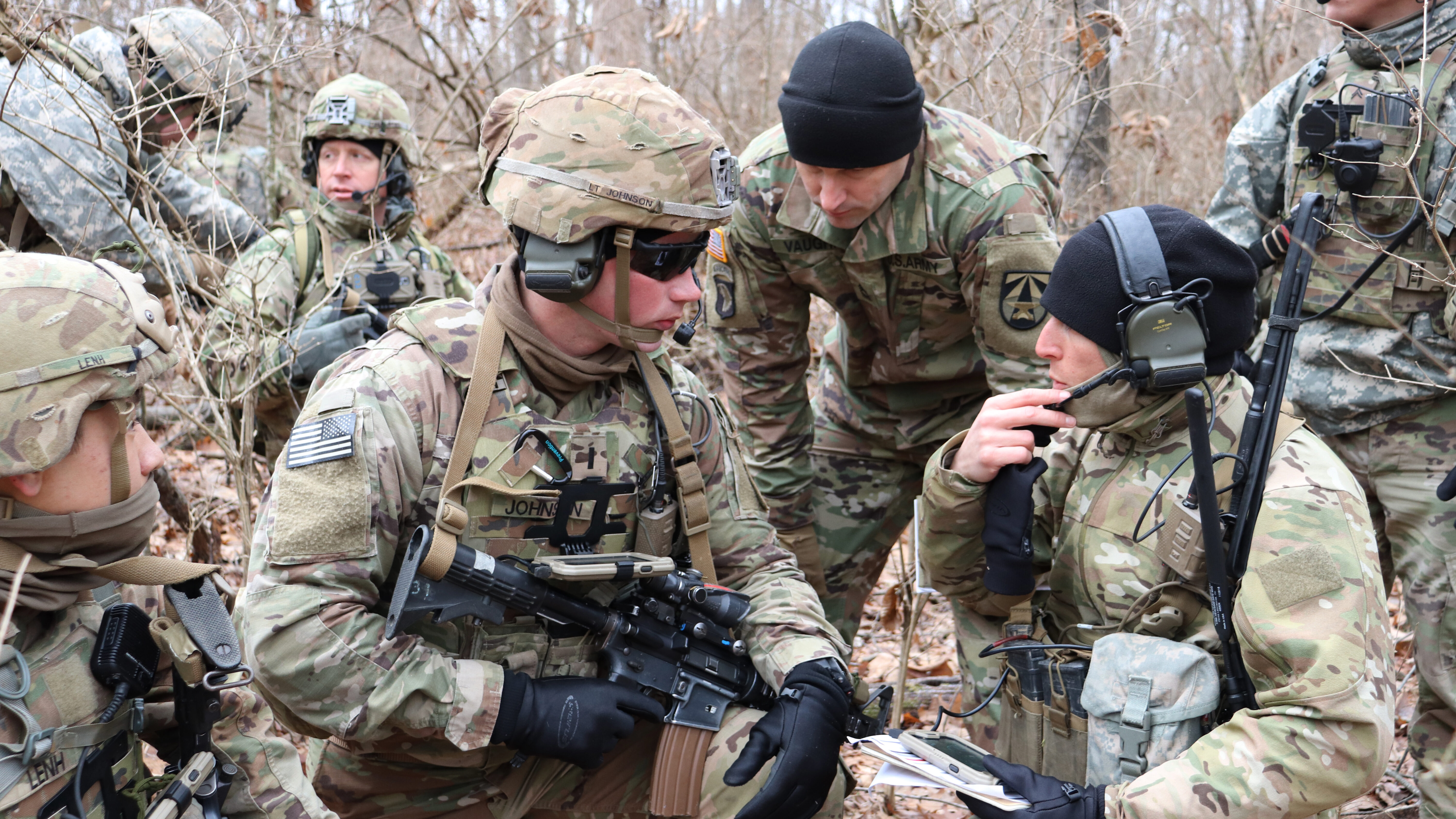
New Army radios will provide more resilient communications on future battlefields. (U.S. Army photo by Justin Eimers, PEO C3T Public Affairs)
WASHINGTON: After two years of operational experimentation, the Army has inked a deal to spend nearly $350 million for thousands of new radios that the service hopes will give soldiers more resilient communications on future battlefields.
The Army’s tactical network acquisition arm — Program Executive Office for Command, Control, Communications-Tactical (PEO C3T) — announced Thursday that its 2-channel Manpack and Leader radio efforts is moving to full rate production.
The Army awarded a multi-vendor contract for its Manpack radios to L3Harris and Collins Aerospace, which will share the $226.5 million purchase. The Army plans to buy 2,320 radios from L3Harris and 1,547 from Collins Aerospace.
For the Leader radio, L3Harris and Thales will share a $118.7 million contract. The Army will buy 2,498 radios from L3Harris and 1,096 from Thales.
“Full rate production of these radios across the force will provide our warfighters with the most advanced radio network capabilities available for enhanced situational awareness, which is critical for mission success,” said Col. Garth Winterle, project manager for tactical radios at PEO C3T in an Army statement.
The radios are a critical part of the Army’s effort to upgrade its tactical network to enable multi-domain operations and provide resilient communications on a future battlefield in which adversaries work to jam them. The manpack radio provides soldiers with the beyond-line-of-sight communications capabilities using the Mobile Objective User System (MUOS), which uses tactical satellite communications.
The service said the radios also contribute to the Army’s unified network strategy because they “enable multiple communications options for commanders and allow for flexibility to upgrade waveforms as new technology emerges.”
Prior to today’s announcement, the radios went through two years of testing, including with the 82nd Airborne Divisions first brigade combat team.
Paul D. Mehney, a spokesperson for the PEO C3T office, told reporters in a statement that while there was “positive feedback for overall communications enhancements,” they’re still working with the radio makers to work out some kinks. Mehney said an “aggressive improvement plan” was in motion.
The Army is currently upgrading its tactical network through capability sets delivered every two years. Both the Manpack and Leader radios were fielded as part of Capability Set ’21 through low-rate initial production.
The new radios will support fielding to multiple infantry brigade combat teams within the 25th Infantry Division, as well as the 2nd Calvary Regiment Stryker brigade combat team and will support the Regionally Aligned Readiness and Modernization Model and Tactical Satellite Modernization efforts, the release said.
Mehney said the radios were recently fielded and used by the third infantry brigade of the 25th Infantry Division, in a training exercise in the Indo-Pacific theater. Mehney said in a statement that MUOS capability “especially proved its worth during dispersed operations by the brigade.”






















